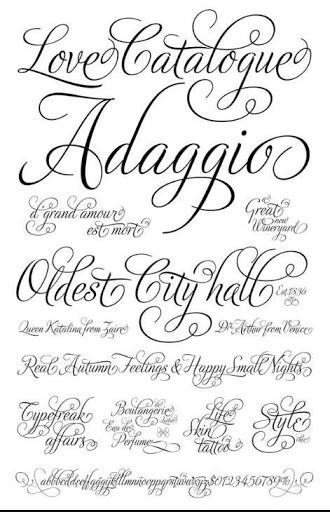- Applications
- سرگرمی
Calligraphy Lettering Arts
Images









Introduction
For our first tutorial in "Mastering Calligraphy", we're going to start with an easy alphabet that uses the two basic strokes we learned in the easy introduction. Just those two strokes make up a majority of the letters in the Roundhand Script alphabet. We'll be breaking the letters into similar groups and mastering both the lowercase and uppercase letters.
Calligraphy adds creative flair to handwritten projects and, even more than being beautiful – which it definitely is, calligraphy is an analog skill that offers much needed respite in our digital world.When teacher taught her calligraphy classes at CreativeLive, she shared some essential tips and techniques all beginner calligraphers can use to improve their letter forms and calligraphy style.
When brush lettering, make sure your downstrokes are all consistently angled. Use more pressure. The downstrokes are the thick parts of brush lettering. Making your own calligraphy guide can help with the angle a ton. You won't always need to use the calligraphy guide, but practicing with one while you're learning can help you develop the muscle memory needed to create consistent and beautiful letters in the future.
When those skills are separate in your head and (more importantly) in your hand, you’ve mastered the basics of how to write calligraphy. That’s the essential simplicity of it.(If you're wondering how to write calligraphy with different sorts of tools such as felt-pens, square brushes etc, you might like the 'Five Options' calligraphy tutorial.If you're looking for a quick-and-easy calligraphic effect or you've hit a wall in your calligraphy practice, you might want to have a look at the page on 'easy' calligraphy.)
1. Calligraphy is not as fluid as classic cursive. Each letter you write should be an individual character, so don’t try to connect them fluidly like you would, say, your signature. Try to write one cursive letter, and then pick up your pen. Start the next letter by “connecting” it to the letter before it. Practice makes perfect.
2. After you’ve written and connected your letters, go back with your writing utensil and “darken” your downstrokes. So sketch over your word again, and anywhere your pen would’ve moved downward, thicken the line. Your upward strokes should remain thin.





























